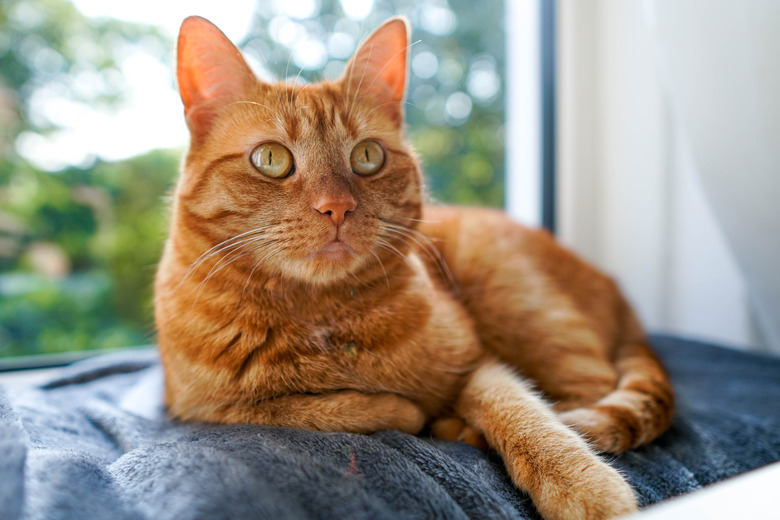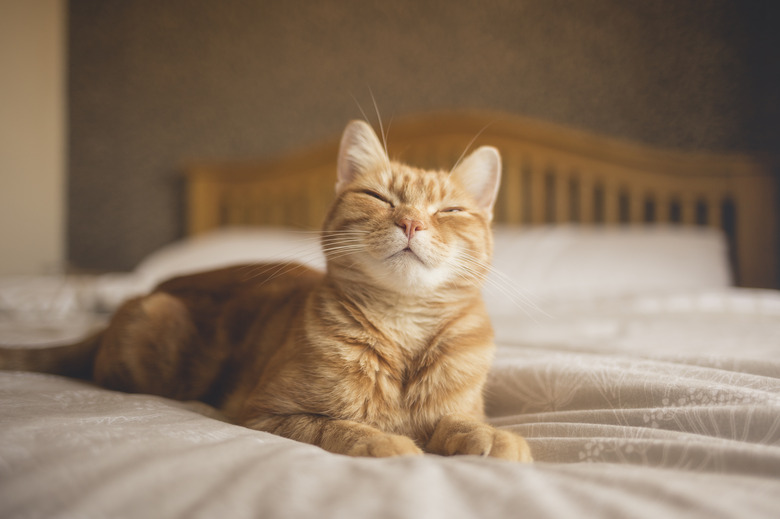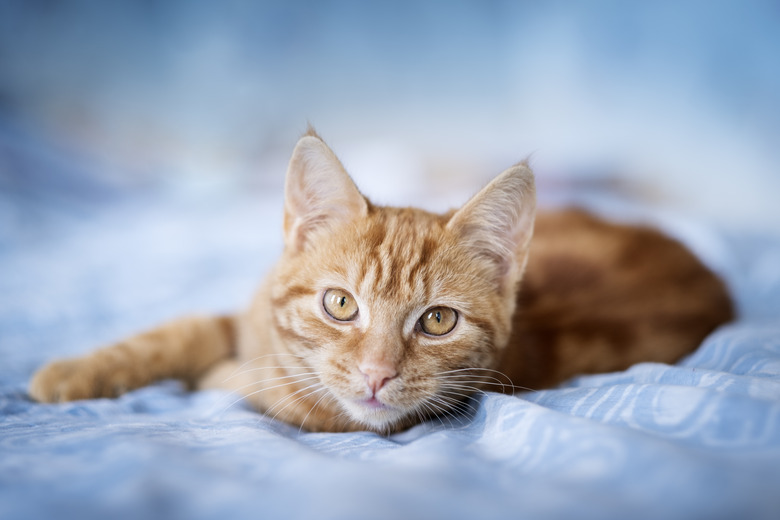Orange Tabby Cat Behaviors
One of the major orange tabby cat characteristics is the pattern that decorates their gorgeous coats. Along with the distinctive "M" that seems to be engraved in the fur on their forehead, the striping, blotching, or tipping with another color identifies the cat as a tabby. In fact, although tabbies come in many colors, an orange cat, also known as a ginger, red, or marmalade, is always a tabby.
Many owners say that orange tabbies are more affectionate than other colors of tabbies or other cats in general. Experts dispute that because tabby is not a breed but a fur pattern that occurs in many breeds. Still, many ginger cat owners are certain that there is an orange tabby cat personality, and they live with them, so who can argue?
Tabby cat breeds
Tabby cat breeds
Since the characteristic tabby fur pattern can occur in almost any breed of cat, there really are no tabby cat breeds. Instead, most cat breeds have some tabbies: Abyssinian tabbies, Siamese tabbies, Maine coon tabbies, Persian tabbies, and so on. Name any cat breed and chances are you will find tabbies among them because they have the characteristic striped pattern and the "M" on their forehead.
Look closely, and you will see that most cats have tabby markings, and therefore, most cats are tabbies. It can be difficult to see the characteristic tabby splotches or stripes in some colors, so look instead for the "M" that's found on the forehead of all tabby cats.
How orange tabbies get their color
How orange tabbies get their color
If you have an orange tabby, you may have noticed that in the cat world, as with human hair, orange is officially called red. Unofficially, you'll hear them referred to as ginger, marmalade, and other food colors, like pumpkin or tangerine. Many times, owners of red/orange cats name them colorfully, calling them by names suggesting fire, like Blaze or Flame, or for yellower reds, Buttercup or Daisy.
You may wonder how the orange coloring occurs, especially if the parents are not noticeably red. Male cats have an X and a Y chromosome, while females have two X chromosomes. The gene that causes red coloring is on the X chromosome, so females need two of these — one from each parent — to have red fur, while males only need one X to end up with orange fur. That's why 80 percent of orange tabbies are male; it's just so much more difficult to give female cats two red genes. Parent cats can carry the red gene, however, and not have red fur themselves.
Behavior traits of male cats
Behavior traits of male cats
While the X chromosome determines a tabby's coloring, it doesn't alter behavior. However, male cats do behave a bit differently from female cats, particularly if they have not been neutered. Males tend to be more aggressive and more demanding than females, so it appears they are seeking human companionship to get what they want. Do they crave more attention than females? It can seem so, as males tend to be more talkative as well.
Mostly, though, male cats that have not been neutered spend a large portion of their time looking for females with whom to mate. They want to roam the streets, and when they do, they get in fights with other males. One study, reported in Psychology Today, found higher numbers of orange cats in rural areas than in cities, possibly because they are more at risk of dying from behavior like fighting, which causes wounds that can become infected and can cause death. Of course, cats on the street are more likely to be hit by cars.
Male orange cats tend to be larger than other cats, so the researchers believe they may enjoy greater social status in rural areas. Females in rural locations tend to mate with only one male, whereas city females mate with multiple males. So, being orange and larger may work in the males' favor by making them more attractive to rural females.
Self-fulfilling prophecy of friendlier gingers
Self-fulfilling prophecy of friendlier gingers
It's also possible that orange tabbies seem to be more friendly because their owners believe this stereotype. When you think something is true, it's natural to look for evidence to prove your point. Orange owners think their cats are more affectionate and have better personalities, so they shower theirs with affection, and their cute tabbies reinforce their belief that orange tabbies are indeed the most affectionate and best cats ever.


